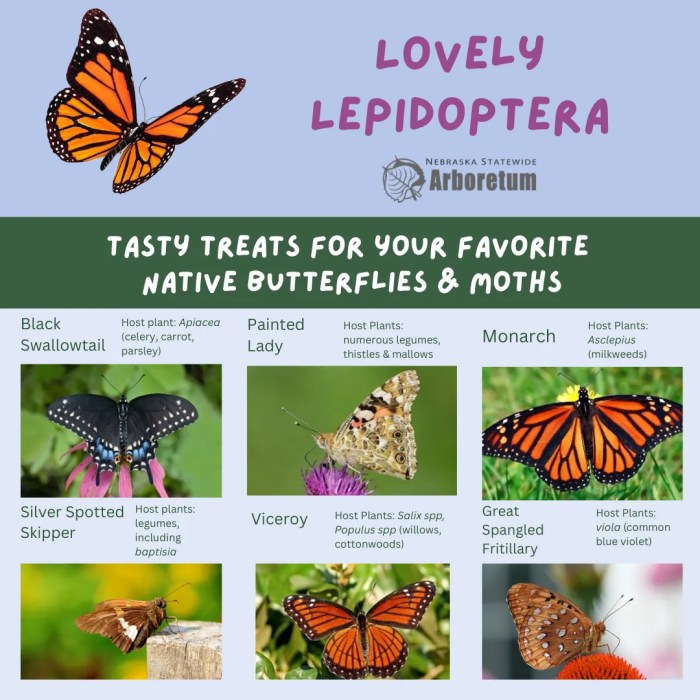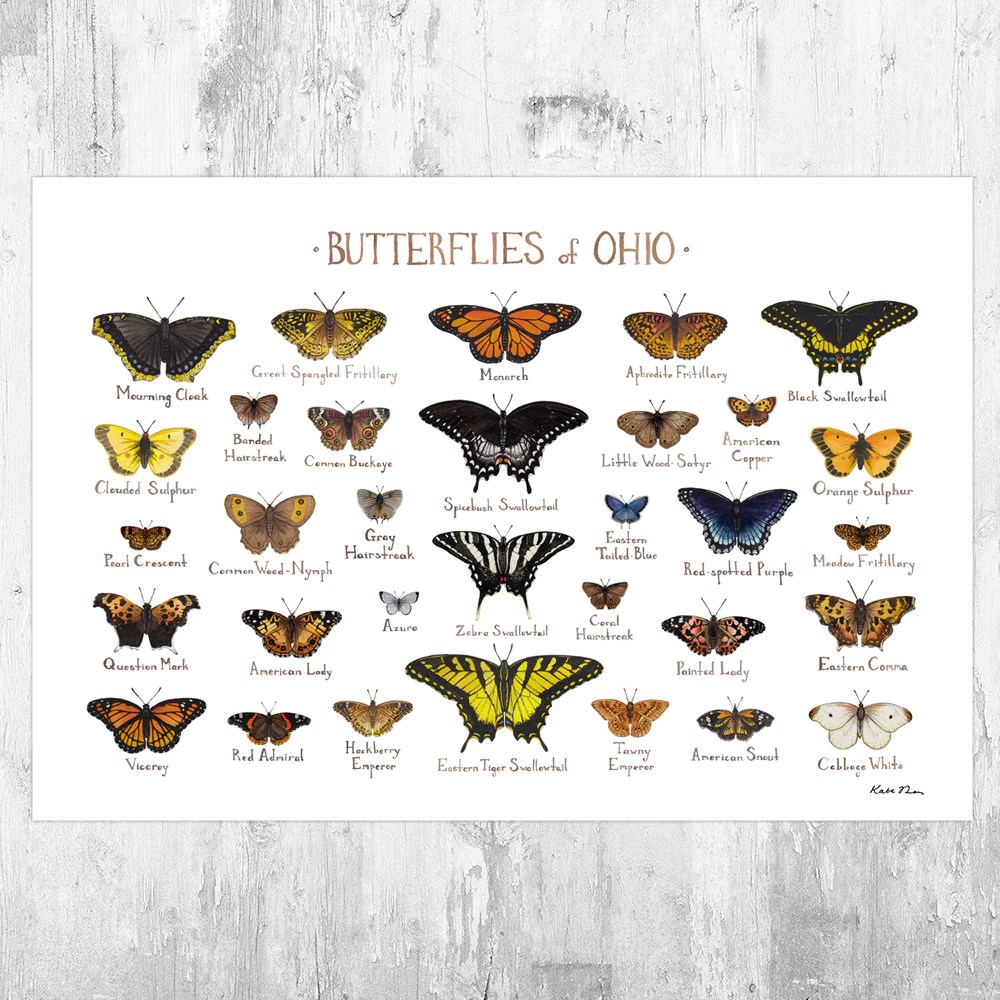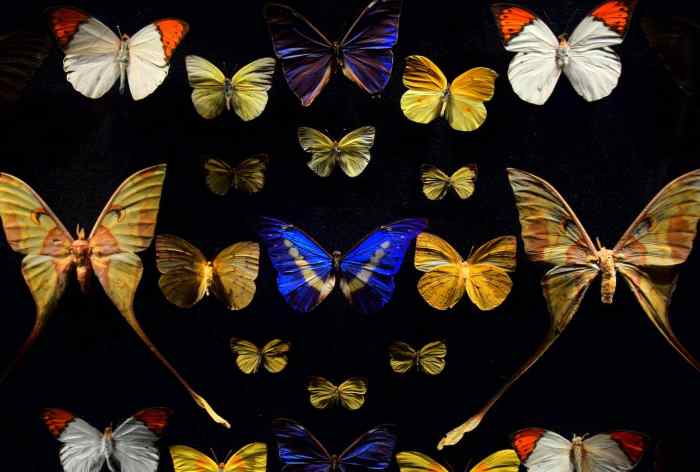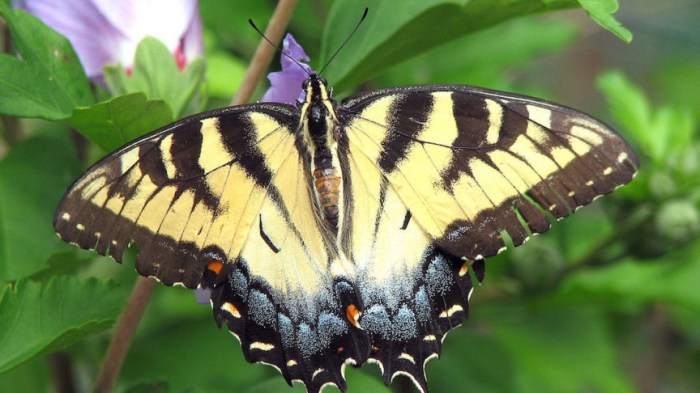Types of butterflies in ohio – Ohio’s diverse habitats foster a remarkable variety of butterfly species, each with its unique characteristics and ecological significance. From the vibrant Monarch to the elusive Eastern Tiger Swallowtail, Ohio’s butterflies paint a colorful tapestry across the state.
Common butterfly families in Ohio include the Swallowtails, Skippers, and Brush-footed Butterflies, each with distinct wing patterns, behaviors, and host plants. Understanding these families provides a glimpse into the intricate relationships between butterflies and their environment.
Ohio Butterfly Diversity

Ohio, located in the Midwestern region of the United States, is home to a diverse array of butterfly species. These winged insects, with their intricate patterns and vibrant colors, contribute to the state’s rich biodiversity.
The variety of butterfly species found in Ohio can be attributed to the state’s diverse habitats, ranging from forests and wetlands to prairies and grasslands. These habitats provide the necessary resources, such as nectar plants and host plants for caterpillars, that support butterfly populations.
In the vibrant meadows of Ohio, a kaleidoscope of butterflies flutters through the air. From the delicate Monarch to the elusive Eastern Tiger Swallowtail, these winged wonders captivate the eye. While butterflies bring a touch of beauty to our world, for those tackling Algebra 1, the algebra 1 eoc review packet can provide a valuable resource for exam preparation.
As we delve deeper into the world of butterflies in Ohio, we find a symphony of colors, patterns, and ecological significance.
Table of Butterfly Species
The following table lists some of the common butterfly species found in Ohio, along with their scientific names, wingspans, and habitat preferences:
| Scientific Name | Common Name | Wingspan (inches) | Habitat Preference |
|---|---|---|---|
| Papilio glaucus | Eastern Tiger Swallowtail | 3.5-5.5 | Open fields, gardens, and woodland edges |
| Danaus plexippus | Monarch Butterfly | 3.5-4.5 | Milkweed patches and open fields |
| Limenitis arthemis | Red-Spotted Purple | 2.5-3.5 | Moist forests and woodland edges |
| Junonia coenia | Common Buckeye | 2-3 | Fields, meadows, and roadsides |
Common Butterfly Families

Ohio is home to a diverse array of butterfly species, belonging to several distinct families. Each family exhibits unique characteristics in terms of wing patterns, behaviors, and host plants.
Among the most common butterfly families in Ohio are:
Nymphalidae (Brush-footed Butterflies)
- Characterized by having a pair of small, vestigial legs on their forewings
- Known for their bright and often intricate wing patterns
- Feed primarily on nectar and tree sap
Examples
Mourning Cloak, Red Admiral, Viceroy
Lycaenidae (Blues, Coppers, and Hairstreaks)
- Typically small, with delicate wings
- Often have iridescent or metallic coloration
- Caterpillars often feed on specific host plants, such as legumes or ants
Examples
Eastern Tailed-Blue, American Copper, Coral Hairstreak
Papilionidae (Swallowtails)
- Large, striking butterflies with elongated hindwings resembling swallowtails
- Wing patterns often feature bold colors and contrasting bands
- Caterpillars are often brightly colored and have distinctive “saddlebags”
Examples
Tiger Swallowtail, Eastern Tiger Swallowtail, Spicebush Swallowtail
Hesperiidae (Skippers)
- Small, fast-flying butterflies with relatively stout bodies
- Wings are often brown or gray, with intricate patterns
- Caterpillars feed on a variety of plants, including grasses and sedges
Examples
Northern Cloudywing, Silver-spotted Skipper, Least Skipper
Pieridae (Whites and Sulphurs)
- Medium-sized butterflies with white or yellow wings
- Wings may have black or orange markings
- Caterpillars feed on plants in the cabbage family
Examples
Cabbage White, Cloudless Sulphur, Orange Sulphur
Butterfly Habitats and Distribution: Types Of Butterflies In Ohio

Butterflies in Ohio inhabit a diverse array of habitats, from lush meadows and woodlands to urban gardens and agricultural fields. Their presence and abundance are influenced by various factors, including vegetation, climate, and urbanization.
The distribution of butterfly species across Ohio varies depending on these factors. Some species, such as the Monarch butterfly, are migratory and can be found throughout the state during the summer months. Others, like the Baltimore Checkerspot, have more restricted ranges and are only found in specific habitats.
Vegetation
Vegetation is a critical factor in determining butterfly distribution. Different butterfly species prefer different types of plants for nectar, food, and shelter. For example, Monarch butterflies rely on milkweed plants for their larvae to feed on. The presence or absence of these plants can significantly impact the distribution of Monarch butterflies in an area.
Climate
Climate also plays a role in butterfly distribution. Butterflies are cold-blooded animals and require warm temperatures to survive. As a result, they are more common in the southern part of Ohio than in the northern part. Additionally, some butterfly species are adapted to specific climatic conditions, such as high humidity or low rainfall.
Urbanization
Urbanization can have a negative impact on butterfly distribution. Urban areas often have less vegetation and more pollution, which can make it difficult for butterflies to survive. However, some butterfly species have adapted to urban environments and can be found in parks, gardens, and other green spaces.
Butterfly Conservation and Threats

Butterflies, with their vibrant colors and graceful flight, play a vital role in Ohio’s ecosystems. However, their populations face numerous threats that necessitate conservation efforts.
One significant threat is habitat loss due to urban development, agriculture, and other land-use changes. As natural areas are converted, butterflies lose their food sources, nectar plants, and breeding grounds.
Pesticides and Herbicides, Types of butterflies in ohio
- Pesticides and herbicides, commonly used in agriculture and landscaping, can be harmful to butterflies. These chemicals can kill adult butterflies, damage their eggs and larvae, and contaminate nectar sources.
Climate Change
- Climate change poses another significant threat to butterflies. Rising temperatures and altered precipitation patterns can disrupt butterfly life cycles, lead to habitat loss, and reduce the availability of food sources.
To protect and enhance butterfly habitats, several recommendations can be implemented. Planting native nectar plants and host plants in gardens and landscapes provides butterflies with essential resources. Reducing pesticide and herbicide use, especially during butterfly flight seasons, can minimize their harmful effects.
Butterfly Life Cycle and Adaptations

Butterflies undergo a remarkable transformation throughout their life cycle, passing through four distinct stages: egg, larva (caterpillar), pupa (chrysalis), and adult.
Egg Stage
Female butterflies lay tiny, oval-shaped eggs on the leaves of host plants. These eggs are typically white or pale in color and are often covered with a protective coating.
Larva Stage
Once the eggs hatch, they emerge as larvae, commonly known as caterpillars. Caterpillars are voracious feeders and spend most of their time consuming leaves.
Pupa Stage
When the larva has reached maturity, it attaches itself to a surface and spins a silken cocoon around itself. Inside the cocoon, the larva undergoes a dramatic transformation, emerging as a fully formed butterfly.
Adult Stage
Adult butterflies are characterized by their vibrant colors and intricate wing patterns. They spend their days flying and feeding on nectar from flowers.
FAQ Summary
What is the most common butterfly in Ohio?
The Cabbage White is the most widespread and abundant butterfly in Ohio.
What is the largest butterfly in Ohio?
The Eastern Tiger Swallowtail is the largest butterfly in Ohio, with a wingspan of up to 5.5 inches.
What is the smallest butterfly in Ohio?
The Least Skipper is the smallest butterfly in Ohio, with a wingspan of about 0.75 inches.